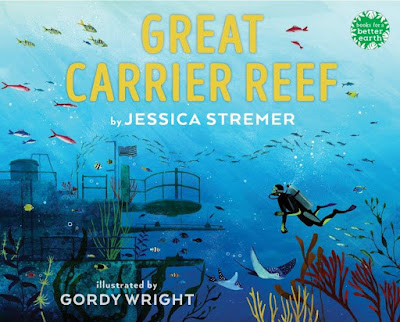During the pandemic, we all looked around for things to keep us occupied. I joined the crowd looking around the internet for classes. At least I could learn something while stuck at home.
What about poetry?
Iambic pentameter. Haiku. Blank verse. Sonnet. As a writer, I’ve delved into poetry at different points in my career because poetry compresses emotion into a small packet. You must carefully choose each word so it evokes the feeling you want the reader to feel.
I signed up for the Language Lyrical Lab with amazing Renee LaTulippe. Her debut picture book,
The Crab Ballet, (it came out in March 2022). I’d heard about her poetry class from many sources, always with glowing recommendations. She offers a self-study course, but during the pandemic I wanted interaction with real people so I chose the full class that included feedback on my poetry.

The lessons, clear and concise, prompted me to try different forms of writing. At the time I was working on
Friday Comes On Tuesday: An Adventure at the Crystal Bridges Museum of American Art. It is written in prose, but then the editor asked if I wanted to write a dedication. Inspired by the class, this was my dedication to my husband – written as a humorous
double dactyl poem. A dactyl is a three-syllable foot with one stressed syllable followed by two unstressed syllables. My husband’s name can be read a double dactyl: DWIGHT Nelson PATtison. The double-dactyl form was a natural choice because of his name and because it’s a humorous form.
QUIPSTER
Comical, farcical,
Dwight Nelson Pattison
Pokes at my prose till it
Warily sings.
Known for his drollery,
Uncompromisingly
Laughing and prodding and
Keeping me sane.
Poetry Inspires Nonfiction
Inspired by the class, I returned to my files and pulled up one about a desert. I’ve written about deserts before in
Desert Baths (NSTA Outstanding Science Trade Book) from Arbordale. But I had a new idea.
Years ago, I taught a writing retreat in Arizona, and the excitement of the day was whether or not we’d get a monsoon rain storm. I tried the story in multiple ways, but it never worked. I wondered if the poetry class could inspire a lyrical narrative. I decided to write the story as a narrative, following the growth of plants and animals across a couple days.
Did you just read that synopsis? It sounds … fascinating, right? Um, no.
Kids love stories with predators because the narrative is full of drama and possible danger. Plants? Not so much. To write this story, I had to find ways to build drama into the story.
This time as I wrote, I listened to the words, striving for rhythm, variety of stresses, and a build-up of tension in the story. It developed well with a strong narrative because I chose to write a mask poem. That means the story is written from the point of view of the desert, as if I—the author—had put on the desert’s mask and stepped into its persona. It needed to be a strong, compassionate voice and yet acknowledge the harshness of the habitat. I became the voice of the desert, lamenting the rapid birth, life, and death that its harsh environment demanded.
Hamilton-Inspired
While I was writing drafts of the desert story, the Wall Street Journal published a fascinating study of Hamilton, by Lin-Manual Miranda entitled, “
How does ‘Hamilton,’ the non-stop, hip-hop Broadway sensation tap rap’s master rhymes to blur musical lines?” It’s fascinating look at how rappers use language by playing with rhymes at the beginning, middle, and ends of words. Near rhymes and internal rhymes are hallmarks of hip-hop. It includes assonance, consonance, and large-multisyllabic rhymes such as “be Socrates” and “mediocrities.”
The most fascinating thing about this article is that it makes the rhyming patterns visible through a specially designed algorithm. It invites you to input your text to see your pattern of language play.
And play, I did. Section by section (it only allows a short text input), I evaluated and revised my desert text:
…I’m flooded with redbluegreenyelloworangepurple
and buzzing with life—
gorgeous, outrageous…
The story developed from a moment of inspiration in Arizona, through a poetry class, and it was polished by an algorithm that visually analyzes hip-hop. And all the while I had to be faithful to the science, the facts of a desert habitat. The result is my newest picture book, I Am the Thirsty Desert (illustrated by Jordan Kim) which releases on March 14, 2023.
When Darcy Pattison mentioned that she had written a book as a "pandemic project" I wanted to know more. She graciously agreed to share her experience her on Archimedes Notebook. Darcy has written tons of books and founded Mims House to publish books that are fun to read and fit in with curriculum standards. You can find out more about it here.














.jpg)













